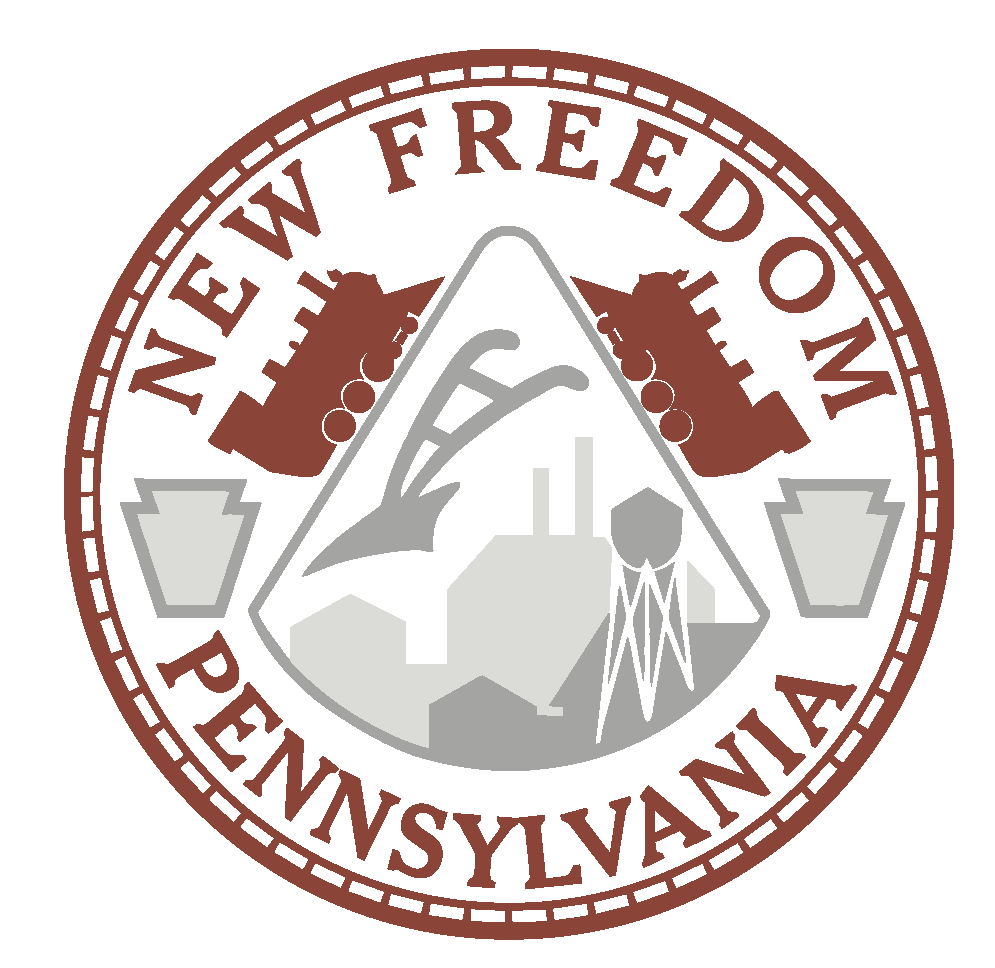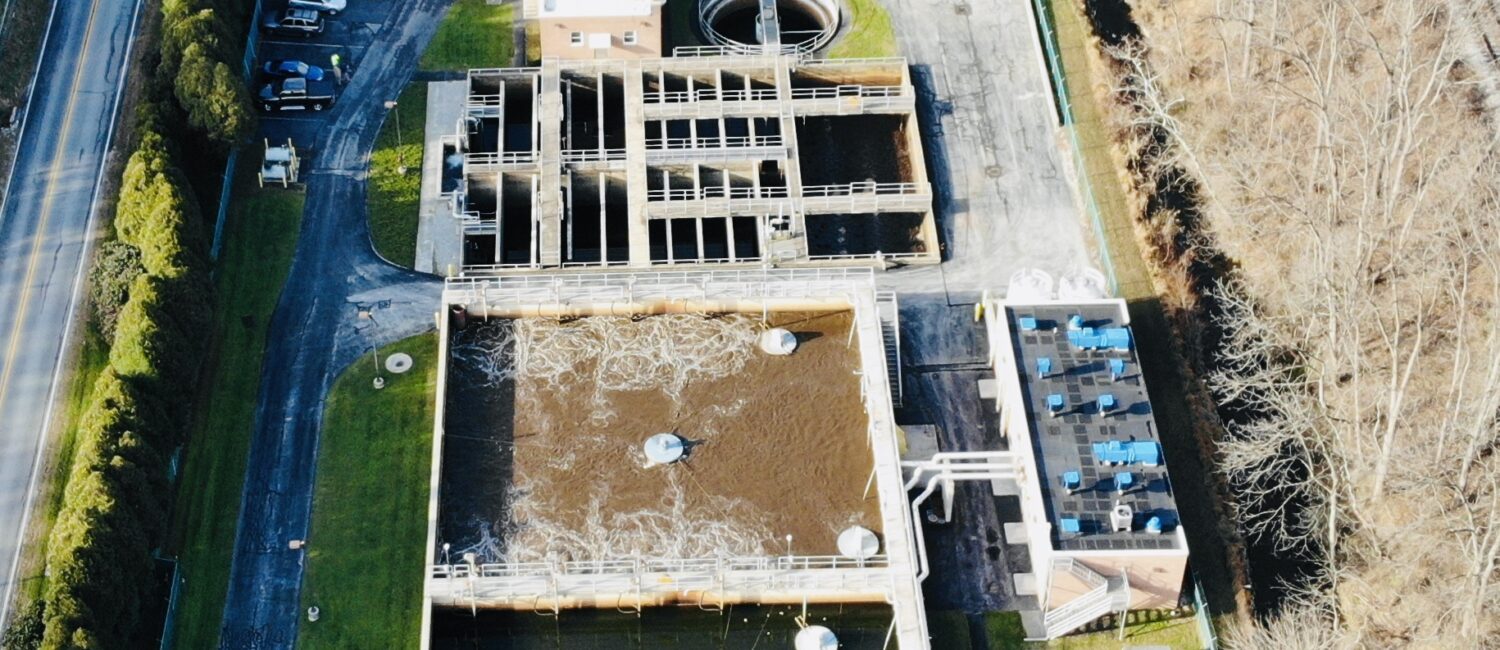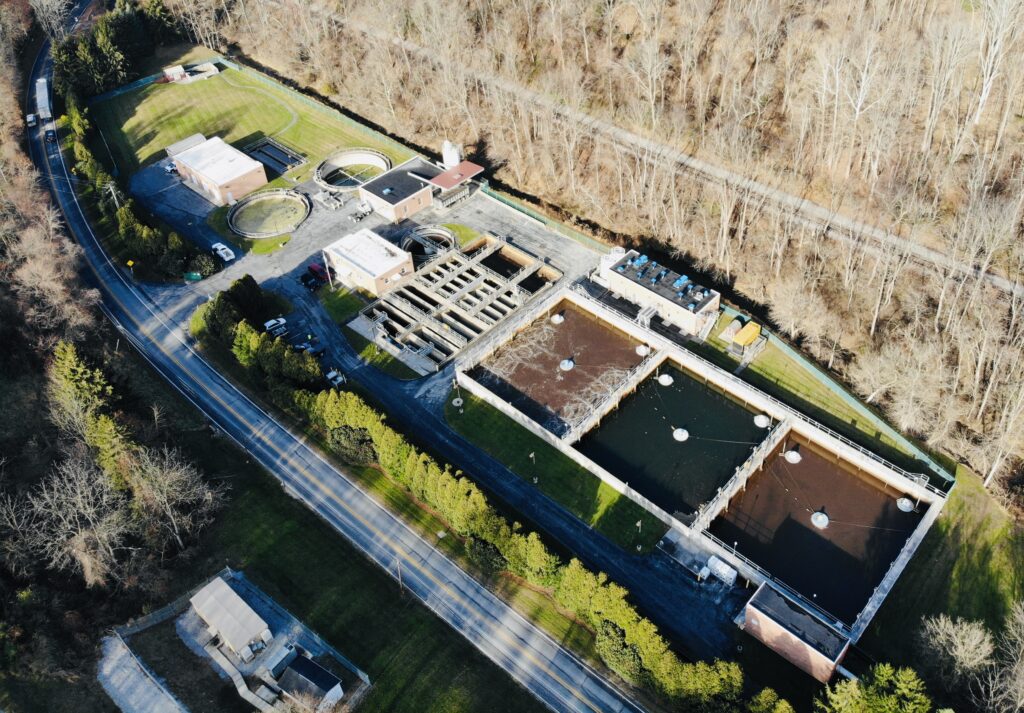Treatment Plant Process Information
The New Freedom Borough Wastewater Treatment Plant provides continuous treatment utilizing liquid and solids handling processes. All wastewater flowing into the plant passes through a Lakeside Raptor Fine Screen that removes the heavier, non-compatible material such as paper, plastics, and rubber from the incoming wastewater. A second Lakeside Raptor Fine Screen can also be utilized during high flow events or as an emergency backup. All screenings from both Fine Screens are conveyed to a dumpster for landfill disposal. Grit settles in the sequencing batch reactors (SBRs) where it is periodically removed. Wastewater influent flow rate is measured in the Headworks Building as it passes through a Parshall flume prior to flowing into the sequencing batch reactors.
The SBR treatment process consists of three (3) sequencing reactors that are designed for conventional pollutant and biological nutrient removal. In addition to biological removal, Ferric Chloride is added to chemically enhance phosphorus removal. Each of these 3 reactors run 5 cycles per day. Within each of these 15 cycles, simultaneous Nitrification and Denitrification occurs in a series of aerobic (with oxygen) and anaerobic (without oxygen) reactions. React cycle Dissolved Oxygen levels are controlled by two (2) HACH LDO probes in each of the three (3) reactors linked to the main PLC (Programable Logic Controller) system. This cycling of oxygen levels allows the plant to effectively meet the Chesapeake Bay Total Nitrogen and Total Phosphorus limits.
After biological treatment in the SBRs, the decanted wastewater flow goes through the chlorine contact tanks where Sodium Hypochlorite is used as a disinfectant. After disinfection, the effluent flows to the Aeration Cascade where an anti-foaming agent is added and the dissolved oxygen is raised to a minimum level of 5.0 mg/L prior to discharge.
Biosolids which settle to the bottom of the SBRs are pumped by waste pumps to the gravity thickener. The thickened sludge is then pumped into an aerobic digester for aeration and storage prior to dewatering. The sludge is dewatered through two (2) PWTech Volute Dewatering Presses. Polymer is added to assist in the removal of entrained water. The filtrate from the Volute Presses is returned to the SBRs for treatment.
Sufficient Lime Kiln Dust is added to the biosolids to achieve Pathogen Reduction and Vector Attraction Reduction. The Lime Kiln Dust is blended with the sludge through a mixing conveyor to produce biosolids at a minimum of 20 percent solids. The finished material is conveyed to a trailer for holding in preparation for transport to the land application site. The Biosolids collection trailer is loaded while resting on a platform scale that accurately measures each load prior to leaving the site. A scale calibration is conducted annually. Biosolids are disposed of through the beneficial use of agricultural land application. Synagro Mid-Atlantic, Inc. is contracted to haul and land apply the biosolids generated at this facility.





